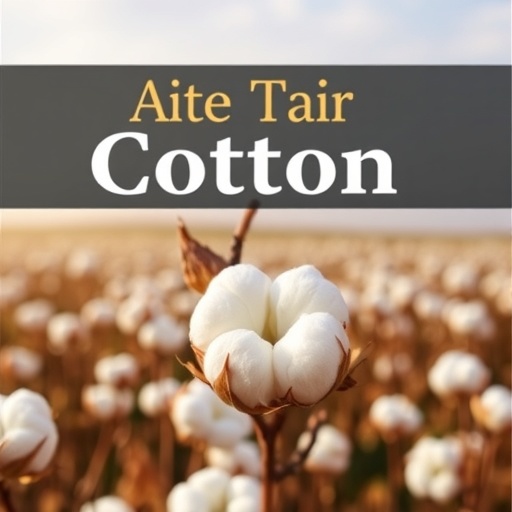Cotton stands as one of the most historically significant and economically vital cultivated crops, boasting an unparalleled contribution to the global fiber industry. Its cultivation is influenced by a complex interplay of biological and environmental factors that profoundly impact plant health, productivity, and the economic returns from cotton farming. The intersection of plant pathology, entomology, and agronomy forms the backbone of understanding and managing these influences. A recently released authoritative compendium offers an unprecedented update and expansion on the known spectrum of cotton diseases and pests, delivering invaluable insights grounded in cutting-edge scientific research and practical applications.
The third edition of the Compendium of Cotton Diseases and Pests emerges as a critical resource, shaped by the expertise of 70 scientists and practitioners worldwide. It synthesizes decades of research, field observations, and lab findings, encompassing not only the traditional ailments that have long challenged cotton cultivation but also emerging pathogens and arthropod pests that threaten yield stability. Edited by Travis R. Faske, Terrance L. Kirkpatrick, Craig S. Rothrock, and Jason E. Woodward, this edition codifies the latest advancements in identifying, diagnosing, and managing cotton health threats within dynamic agricultural ecosystems.
One of the remarkable expansions in this edition pertains to entomological factors. It includes 14 comprehensive chapters dedicated exclusively to arthropod pests, reflecting the growing recognition of their detrimental roles in cotton agroecosystems. These chapters illuminate the life cycles, behavior, and ecology of thrips, boll weevils, aphids, whiteflies, and other pests notorious for compromising cotton plant physiology, thereby diminishing fiber quality and crop outputs. The integration of modern molecular techniques and ecological management strategies provides growers and researchers with innovative frameworks for pest control that transcend conventional pesticide reliance.
Equally groundbreaking is the detailed coverage of emerging diseases such as target spot and areolate mildew. These fungal afflictions, recently recognized for their increasing prevalence, underscore the dynamic nature of plant-pathogen relationships in cotton fields. The book presents an in-depth analysis of the pathogen biology, epidemiology, and environmental conditions conducive to disease outbreaks. Moreover, it describes lesion nematodes’ pathology, explicating their subtle yet destructive effects on root systems and nutrient uptake mechanisms, which often escape immediate detection until significant damage has occurred.
This compendium employs hundreds of new high-resolution images, enabling precise identification crucial for early diagnosis and rapid intervention. These visuals are meticulously curated to highlight symptomatology, pest morphology, and pathological features at various developmental stages, thereby bridging the gap between laboratory diagnostics and field-level scouting. The visual aids serve not only academic and extension audiences but also empower growers and consultants who must make timely, informed decisions under often unpredictable field conditions.
The comprehensive content transcends biological challenges, incorporating extensive discussions on abiotic disorders that affect cotton. These include salinity, drought stress, nutrient imbalances, and adverse weather phenomena, which often interact synergistically with biotic stresses to exacerbate crop losses. The book emphasizes integrated management approaches that combine cultural practices with genetic resistance and environmentally sustainable interventions, advancing the frontier of cotton resilience in the face of climate variability and intensive farming.
Notably, a glossary and well-structured appendices are newly introduced to enhance the practicality of the compendium for diverse users. The glossary defines scientific terminology and pest management concepts, making the text accessible to a broader readership while maintaining technical rigor. Appendices provide quick-reference tables and checklists for diseases and pests, facilitating easy navigation and efficient use in both research and operational contexts.
The impact of cotton diseases and pests transcends local agricultural boundaries; they pose global threats requiring coordinated scientific responses. This compendium consolidates knowledge from multiple continents, reflecting an international consensus on best practices and emerging challenges. It serves as a central repository for the dissemination of integrated pest and disease management strategies that align with global agricultural sustainability goals and market demands for high-quality cotton.
Authors and editors involved in this edition have embedded a multidisciplinary approach that spans molecular biology, plant physiology, ecology, and agronomy. By doing so, they elucidate the intricate interactions between cotton plants and their myriad pests and pathogens in ways that inform not only symptom management but also predictive modeling and preventive strategies. Such an approach bolsters capability for proactive disease forecasting and pest outbreak mitigation, vital for minimizing economic losses.
This essential reference underscores the critical role of research-backed knowledge in supporting the cotton industry’s economic viability. Effective disease and pest management reduces the necessity for indiscriminate chemical applications, thereby promoting environmental health and fostering more sustainable fiber production systems. The compendium’s extensive scientific apparatus empowers stakeholders across the cotton value chain—from plant pathologists and entomologists to growers and policy makers—to navigate complexities with confidence.
Ultimately, the Compendium of Cotton Diseases and Pests, Third Edition equips the global cotton community with the tools to safeguard yields and enhance fiber quality by merging classical knowledge with innovations reflecting recent scientific breakthroughs. This edition’s timely release arrives as cotton producers face mounting challenges posed by evolving pathogens, climate dynamics, and economic pressures, making it an indispensable asset for securing the future of cotton agriculture worldwide.
Subject of Research: Cotton diseases, pests, and abiotic disorders affecting cotton production
Article Title: The Third Edition of the Compendium of Cotton Diseases and Pests: A Definitive Guide for Modern Cotton Health Management
Web References:
- APS PRESS: https://www.apsnet.org/publications/apspress/Pages/default.aspx
- The American Phytopathological Society: https://www.apsnet.org/Pages/default.aspx
Image Credits: © APS PRESS, The American Phytopathological Society
Keywords: Cotton, Farming, Pest control, Agronomy, Agriculture, Crop production, Crop yields, Cropland, Plant pathology, Plant diseases, Plant pathogens, Entomology




